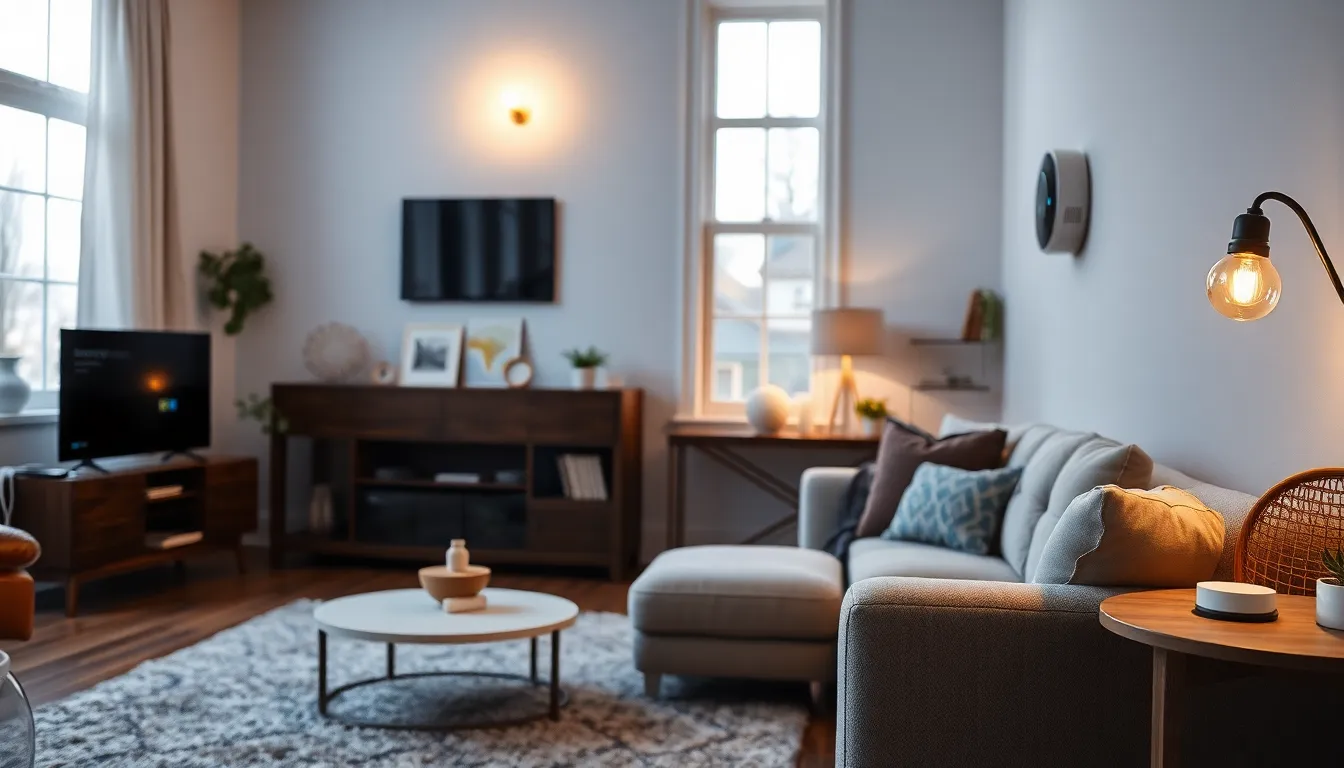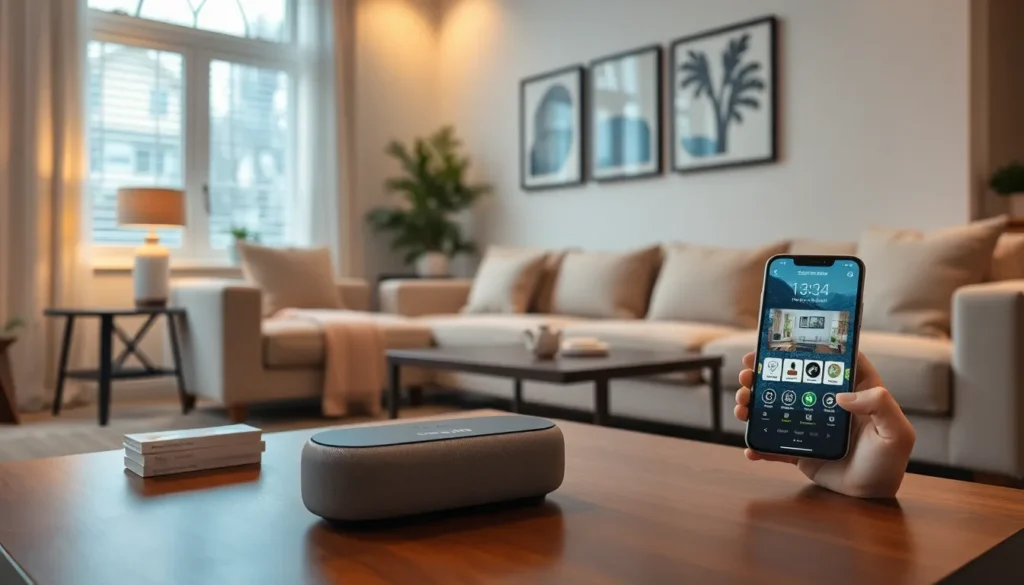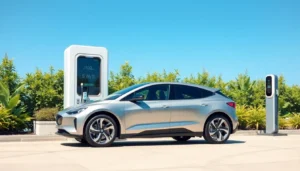Imagine waking up to the gentle hum of your coffee maker, the blinds lifting on their own, and the thermostat adjusting to the perfect temperature—all before you even step out of bed. Welcome to the world of smart home tech, where everyday tasks become effortless and your home practically anticipates your needs. It’s like having a personal assistant, minus the awkward small talk.
Smart home devices are revolutionizing how people live, making homes not just smarter but also more efficient. From voice-activated assistants to security systems that can outsmart a cat burglar, these gadgets are designed to simplify life. So why not turn your home into a tech-savvy haven? After all, who wouldn’t want a home that listens to their commands—especially when it comes to ordering pizza? Dive into the world of smart home tech and discover how it can transform your living space into a futuristic paradise.
Overview of Smart Home Tech
Smart home technology refers to a collection of devices designed to enhance home automation and improve living experiences through connectivity. Integration of these technologies leads to better efficiency, security, and convenience in daily activities.
Definition and Importance
Smart home technology consists of devices interconnected through the Internet of Things (IoT). These devices range from smart speakers and thermostats to cameras and lighting systems. Importance lies in their ability to automate tasks and provide remote control via mobile apps. Enhancing comfort is one aspect, while increasing energy efficiency plays a crucial role in cost savings. Homes equipped with smart tech contribute to better security and improved accessibility for all users.
Evolution of Smart Home Technology
The journey of smart home technology began in the late 20th century with basic automation. Early devices included programmable thermostats and basic security systems. Rapid advancements occurred with the introduction of Wi-Fi and mobile connectivity in the 2000s. Growth continued as companies developed user-friendly interfaces, making smart tech more accessible. Presently, smart home technology integrates artificial intelligence, allowing devices to learn user preferences and behavior patterns, significantly improving their functionality.
Key Components of Smart Home Tech

Smart home technology consists of various components that work together to enhance the living experience. These devices empower users to automate, control, and monitor their homes efficiently.
Smart Lighting Solutions
Smart lighting solutions allow users to customize their home ambiance effortlessly. These devices include smart bulbs and integrated lighting systems that adjust brightness and color based on user preferences. They can be controlled remotely via smartphones or voice commands, providing convenience. Scheduling features enable automatic lighting changes for different times of the day, enhancing security when homeowners are away. Many systems sync with other smart devices, creating a cohesive home environment.
Home Security Systems
Home security systems play a crucial role in protecting residences. Modern systems include surveillance cameras, smart locks, and motion sensors that integrate into a centralized app for monitoring. Users can receive real-time alerts on their phones about any unusual activity. Some systems even offer facial recognition technology, adding an extra layer of security. Enhanced features like remote unlocking provide additional peace of mind, allowing homeowners to grant access to visitors even when they’re not at home.
Smart Thermostats and HVAC Control
Smart thermostats and HVAC control systems optimize home climate efficiently. These devices learn user habits, adjusting temperatures automatically for comfort and energy savings. User-friendly apps facilitate remote temperature control from anywhere, making adjustments easy. Many models report usage patterns and provide insights on energy consumption, helping to lower bills. Integration with other smart devices allows for even greater automation and efficiency throughout the home.
Benefits of Smart Home Tech
Smart home technology offers various benefits that significantly improve daily living. It enhances overall convenience, promotes energy efficiency, and provides advanced security measures.
Enhanced Convenience
Smart home devices streamline everyday tasks, allowing users to manage their home environment effortlessly. Voice-controlled assistants enable hands-free operation of lights, thermostats, and appliances. Users can automate routines, like scheduling lights to turn on at sunset or adjusting the thermostat before arriving home. Mobile apps often provide centralized control over multiple devices, simplifying management. The ability to receive real-time notifications enhances awareness, ensuring users remain informed about their home status.
Increased Energy Efficiency
Energy management becomes more effective with smart home technology. Smart thermostats learn user habits, optimizing heating and cooling based on presence. This feature often results in lower energy bills and a reduced carbon footprint. Smart lighting systems use sensors and timers to ensure lights operate only when needed. Energy consumption can be tracked through applications, providing insights into usage patterns. This data empowers users to make informed decisions about energy use, leading to significant conservation efforts.
Improved Home Security
Home security greatly benefits from smart technology integration. Advanced security systems feature real-time surveillance, alerts, and remote monitoring capabilities. Users can access live video feeds from their smartphones, ensuring peace of mind. Smart locks offer keyless entry options, enhancing access control without physical keys. Movement detection alerts notify homeowners about unexpected activity. Enhanced security features often deter potential intruders and contribute to a safer living environment.
Challenges and Considerations
Smart home technology presents notable challenges that homeowners should consider before making decisions. Addressing these concerns ensures a smoother integration of devices into living spaces.
Privacy and Security Risks
Privacy stands as a significant concern with smart home devices. Data collected from devices often includes personal information, which can be vulnerable to breaches. Notifications of unauthorized access can occur, yet numerous devices lack robust encryption. High-profile cases of hacking underscore the importance of implementing security protocols. Monitoring device settings along with regular software updates can enhance safety.
Compatibility Issues
Compatibility issues frequently arise as consumers work with a multitude of devices from various manufacturers. Some devices may conflict with others, complicating the integration process. A lack of standardization in smart home systems can hinder seamless functionality. Researching compatibility before purchasing ensures choosing devices that work together effectively, streamlining user experiences and reducing frustration.
Cost of Implementation
Cost of implementation poses another challenge. While initial investments in smart devices can lead to long-term savings, upfront expenses may strain budgets. Additional costs for installation, subscription services, and maintenance should factor into planning. Evaluating return on investment assists in determining which devices to prioritize and how to allocate resources efficiently.
Future Trends in Smart Home Tech
Smart home technology continues evolving rapidly, with new advancements on the horizon. These trends indicate a shift towards more intuitive systems.
Integration with Artificial Intelligence
Artificial intelligence (AI) is increasingly enhancing smart home devices. Smart systems analyze user habits and preferences over time. This capability leads to proactive adjustments, optimizing energy usage and convenience. Machine learning contributes to personalized experiences, making interactions seamless. Devices communicate with each other, creating a cohesive home environment. The enhanced functionality of AI improves not just automation but security as well. Anticipating user needs will become standard, driving widespread adoption of AI-integrated devices.
Growth of Voice-Activated Devices
Voice-activated devices are gaining popularity in smart homes. Many households now utilize smart assistants to simplify daily tasks. Users control lighting, temperature, and appliances through simple voice commands, improving accessibility. This technology appeals to different demographics, including the elderly and people with disabilities. As natural language processing advances, voice recognition becomes more accurate and responsive. Integrating these devices into existing ecosystems enhances user experience. The trend indicates that voice-activated technology will dominate future smart home innovations.
Smart home technology offers a transformative way to enhance daily living. By automating tasks and improving efficiency, it creates a seamless experience that caters to individual needs. As advancements in AI and voice-activated devices continue to evolve, homeowners can expect even greater convenience and control over their living spaces.
While the benefits are substantial, it’s crucial to remain aware of potential challenges such as privacy concerns and compatibility issues. A thoughtful approach to integrating smart devices can lead to a more secure and energy-efficient home. Embracing smart home tech not only elevates comfort but also paves the way for a modern lifestyle that adapts to personal preferences.






